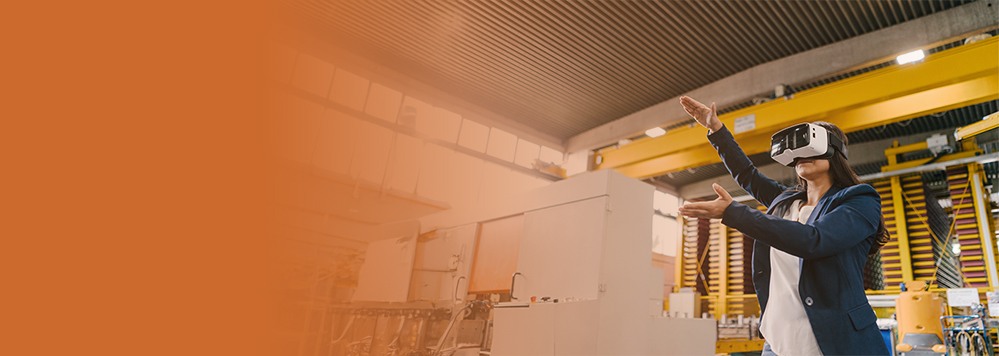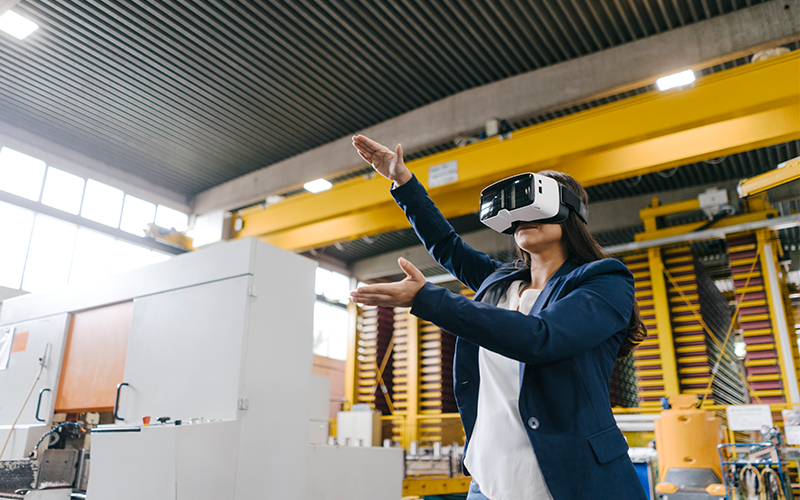“Your mobile device quickly has become the easiest portal into your digital self.” — Phil Nickinson, Editor of AndroidCentral.com
There is nothing that smartphones can’t be used for — stay in touch, shop, pay bills, kill boredom, name it. The enabler? Mobile applications.
With over 5.7 million mobile apps hosted on the Google Play and Apple stores, it's no wonder that the number of app downloads has reached an impressive 230 billion globally.
The driving force behind this booming mobile app market is the integration of innovative technologies such as the Internet of Things (IoT), artificial intelligence (AI), and augmented reality (AR).
In this blog, we'll focus on AR mobile apps and how they're transforming various industries. From the early AR game, AR Tennis designed for Nokia phones in early 2000, AR has come a long way and continues to offer tremendous growth potential for mobile app development.
The adoption of AR technology has been on the rise in recent years, and it is only set to continue growing in the future. In addition to gaming and entertainment, industries such as retail, education, social media, real estate, and healthcare are increasingly adopting AR technology to improve their services and offerings.
A recent survey predicts the global mobile AR market size to grow from $12.61 billion in 2020 to $184.61 billion by 2030.
Listed below are a few AR use cases that are transforming industries and reshaping mobile app development:
- Retail
- Education
- Social Media
- Real Estate
- Healthcare
In the retail industry, AR-based mobile apps are making it easier for customers to try on clothing, footwear, and accessories before making a purchase. With virtual fitting rooms, customers can see how different items of clothing look on them without having to physically try them on, reducing the need for returns and increasing customer satisfaction.
Furniture retailers are also using AR apps to provide customers with a more interactive experience, allowing them to visualise furniture in their homes before making a purchase.
Converse, Sephora, L'Oréal, and Ikea are among the retailers who have significantly reduced shopping cart abandonment by leveraging AR.
Do Mathematics and Physics give you nightmares? Do the concepts pass right over your head? Hopefully not, with innovative AR apps making their way into classrooms.
Graphics and real-time animations immerse pupils in interesting settings. Point the camera at an image of a heart, and a 3D heart pops up to educate you! Sounds like fun, doesn’t it? There is immense potential here for dull classrooms to be made lively and interesting.
Quiver and AR Atom Visualizer for ARCore are two popular apps in this category.
People with rabbit ears, yellow hair, and flower crowns are a common sight on Snapchat and Instagram, thanks to AR photo filters. Fun, but not only that!
AR filters have inspired creative ways of social and environmental activism. Take, for example, French artist Ines Longevial, who took to Instagram with a save the planet mask that she designed using AR face filters to spread a green message.
Marketers are also taking advantage of the unique style of brand and product promotion that AR enables, making it an effective marketing tool.
AR apps are making it easier for buyers and tenants to ‘experience’ properties before making a purchase. With 3D tours of properties, buyers and tenants can get a better understanding of the layout and features of a property, reducing the need for physical inspections. This is making the commercial real estate transaction process faster and more efficient.
In this sector, AR has contributed significantly towards the efficacy of complex medical and diagnostic procedures, surgical training, visualisation of treatment procedures, monitoring of vitals during surgery through AR-enabled smart wearables, navigating within a healthcare facility and risk evaluation, among others.
The future
AR technology is transforming the way businesses operate and improving the customer experience by being interactive, immersive and engaging.
With the global mobile AR market size expected to grow from $12.61 billion in 2020 to $184.61 billion by 2030, it is clear that AR technology will continue to be a key area of investment for companies looking to stay ahead of the curve.
As the technology continues to evolve, we can expect to see even more innovative and practical AR mobile apps in the future.
The day is not far when AR in business apps will be commonplace.
*For organizations on the digital transformation journey, agility is key in responding to a rapidly changing technology and business landscape. Now more than ever, it is crucial to deliver and exceed on organizational expectations with a robust digital mindset backed by innovation. Enabling businesses to sense, learn, respond, and evolve like a living organism, will be imperative for business excellence going forward. A comprehensive, yet modular suite of services is doing exactly that. Equipping organizations with intuitive decision-making automatically at scale, actionable insights based on real-time solutions, anytime/anywhere experience, and in-depth data visibility across functions leading to hyper-productivity, Live Enterprise is building connected organizations that are innovating collaboratively for the future.








